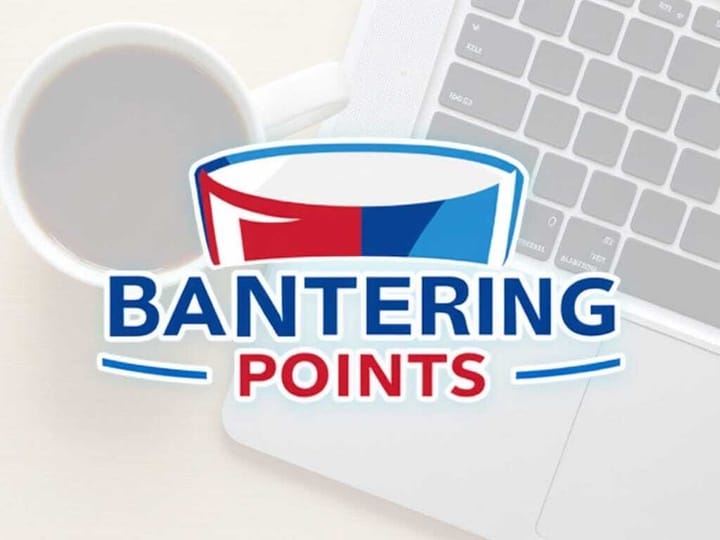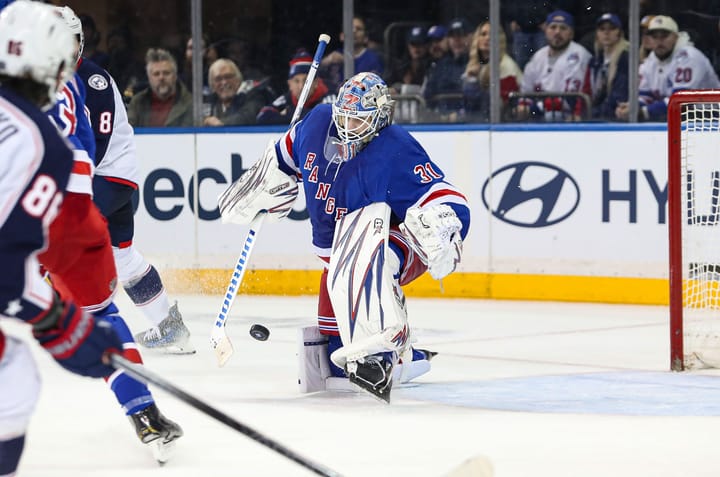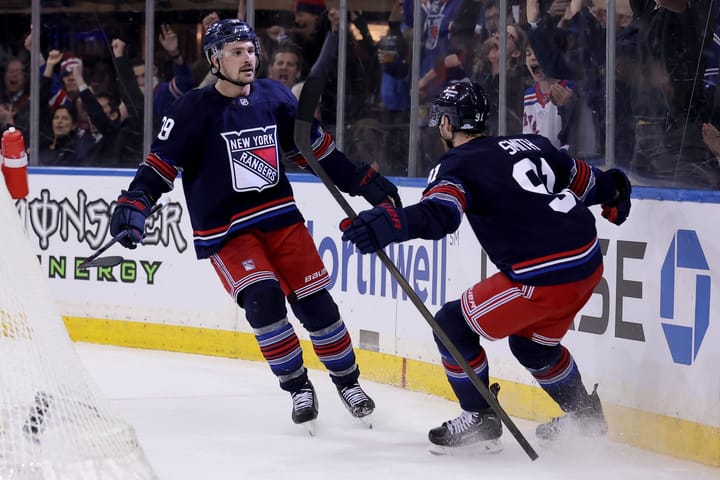Breaking Down Brady Skjei’s Contract Extension
Rangers continue trend of extending defenders off their ELCs by inking Skjei to six-year, $31.5 million deal.
The New York Rangers have lived and died by the bridge deal for much of the past decade, but they avoided that entirely by signing Brady Skjei to a six-year, $31.5 million dollar deal with an annual value of $5.25 million against the salary cap. The deal is back-loaded with Skjei making $15.3 million in the first three years and $16.2 million in the last three.
6 year contract breakdown for #Rangers Brady Skjei
— CapFriendly (@CapFriendly) July 28, 2018
TOTAL = $31.5M
$28.5M Base + $3M SB
2018-19: $4.7M Base + $1M SB
2019-20: $4.4M Base + $1M SB
2020-21: $4.2M Base
2021-22: $4.4M Base + $1M SB
2022-23: $5.4M Base
2023-24: $5.4M Basehttps://t.co/UACkHIQYpQ pic.twitter.com/zF8W0bQIal
The last three years of the deal also include a modified NTC in which Skjei can submit a list of 10 teams he can’t be traded to.
The term of the deal was a bit of a surprise for some, as there was a prevailing thought that coming off a down season, the Rangers would opt for a two-year “show-me” deal for Skjei. The Rangers decided to bet on their youngster they selected No. 28 overall in 2012 and they could have him on the roster through the 2023-24 season if they choose to.
The Rangers have done this sort of thing before, and here are a few recent examples:
- Marc Staal signed a five-year deal worth $3.975 million a season (6.69% of salary cap) coming off his entry-level deal in 2010. He followed it up with a six-year deal worth $5.7 million a season (7.81% of salary cap) in 2015.
- Dan Girardi was an undrafted free agent and signed a pair of two-year deals before inking a four-year deal worth $3.325 million a season (5.60% of salary cap) in 2010. That was followed up with a six-year deal worth $5.5 million a season (8.55% of salary cap) in 2014.
- Ryan McDonagh signed a six-year deal worth $4.7 million a season (7.31% of salary cap) coming off his ELC in 2013. He was dealt at this year’s trade deadline and signed a seven-year deal worth $6.75 million a season (8.49% of salary cap) on July 1./
In each of these cases, the player was at a different point of their career and had different things going for them. Skjei’s situation isn’t a perfect comparison but speaks to how the Rangers tend to operate with young defenders who have developed in the system.
The biggest element of Skjei’s deal is that some feel he hasn’t proven anything yet, and therefore the deal is a massive risk and overpayment. I admit, it is risky, but the Rangers can afford that risk given the fact that they have a wide open cap situation. Don’t interpret this statement as they can be frivolous because they have cap space. The Rangers as an organization don’t have any players internally who can currently replace Skjei, and because of their comfort with him and the cap space available, they decided to take care of business right away.
Teams often have the ability to use their lack of cap space as a form of leverage when it comes to driving the price down. The Rangers used that tactic when negotiating with Derek Stepan on his bridge deal when he wanted a long-term deal similar to Ryan McDonagh’s.
The reason I feel the Rangers extended Skjei is that they recognize the player they have, understand how big a mess last year was, and they didn’t want to enter a situation where Skjei could succeed and increase his value.
At $5.25 million a year, Skjei will be the 43rd highest paid defender in the NHL. In terms of recent signings, his deal comes in lower in terms of cap hit than Jaccob Slavin ($5.3 million x 7) and Colton Parayko ($5.5 million x 5). It is also lower than Jacob Trouba who was awarded a one-year deal worth $5.5 million through arbitration which he should certainly springboard into a larger contract going forward.
Notably, it is more lucrative than Shayne Gostisbehere’s, who signed a year too soon for $27 million over six years ($4.5 million AAV). I say this because he inked his deal coming off a 39-point season in 2016-17, and the 2017-18 campaign saw him explode with 65 points. In his rookie season, he tallied 46 points, and his sophomore season saw him dip offensively by seven points. Instead of playing around, the Flyers recognized what they had, and saved a ton of money in the process. You may also look at this situation as say, why didn’t the Rangers do the same and save money on Skjei by leveraging a down season?
Under normal circumstances, a team can use a down season as leverage, but the Rangers have been pretty open on how bad things were last year from a structure perspective—indirectly alleviating blame from the players—as was surprisingly admitted by team owner, James Dolan after the season ended.
Had the Rangers bridged Skjei, he would have had an age 24 and 25 season as the No. 1 defender on the left side, with a healthy Kevin Shattenkirk on the right, under a new coach and system that could benefit his game. He would have finished his deal as a 26-year-old one year away from unrestricted free agency. From that point, Skjei would be in a position to springboard toward a long-term deal that cuts into the wrong side of 30 with a value of $5.5 to $6 million when you factor in league salary cap growth and the fact that such a deal would primarily buy UFA years. It would also have put the Rangers in the same situation they are currently in with Kevin Hayes – one that, thanks to the inability to negotiate a long-term extension, could see the team give him a one-year deal before moving him at the trade deadline.
While regression is an acceptable fear, this deal getting done suggests there’s more evidence to suggest that last season was the exception rather than the rule. It also appears the Rangers didn’t want to take the risk of Skjei improving, nor they didn’t want a situation where an extension went past age 30. They seem to be comfortable with the cap hit and the risk/reward that comes along with it.
Hypotheticals aside, the Rangers opted to pay a little more than he is worth currently in order to lock him up long-term while maintaining the ability to trade him in the event things don’t work out. His deal is just 6.6% of the salary cap, and that percentage will decrease over the next six years as the cap continues to rise.
With that in mind, I wanted to look at Skjei’s performance and understand what type of player he can be for the Rangers:
The 2016-17 season was Skjei’s first full season in the NHL and at 5v5 he logged 1193 minutes while posting a stat line that included 27 points, a 1.36 P/60, a 50.38 CF% (3.75 Rel) a 55.86 GF% (4.86 Rel) and an xGF% of 49.46 (0.84 Rel). This success included a PDO of 102.42 which suggests that Skjei had some luck on his side and was making the most of his opportunities while benefiting from some bounces.
For Skjei, the 2017-18 season was a much different story – one in which he eventually assumed the No. 1 position on the left-hand side. It became official once Ryan McDonagh was traded, but there were points in the season in which Skjei filled that role while the former captain was banged up. In 5v5 situations he logged 1418 minutes while posting a stat line that included 13 points, a 0.55 P/60, a 46.91 CF% (1.57 Rel), a 38.89 GF% (-9.33 Rel) and an xGF% of 48.6 (2.33 Rel). This performance included a PDO of 97.75 – suggesting that Skjei was woefully unlucky, and that bears itself out when you look at his actual GF% and xGF%. The results speak to how Skjei played, but there are underlying elements that drove the results.
Before I get into Skjei’s numbers, I want to share this thread of tweets of mine prior to his signing.
This is not an exact science, but Corsica defaults to 50 mins 5v5 in the defense pairing stats section. So I wanted to see by a team by team basis how many pairings per team had at least that amount of time together. pic.twitter.com/65AeVNdGX9
— Tom Urtz Jr. 🥅📊📉🎰 (@TomUrtzJr) July 19, 2018
I ran this again using the average TOI of all defense pairings in the NHL. Last year 1,315 pairs recorded TOI together. The average amount of TOI of a D pair in the NHL last year 5v5 was 93:36. Here's teams and No. of D they had who fit criteria. pic.twitter.com/djuHPTzKTv
— Tom Urtz Jr. 🥅📊📉🎰 (@TomUrtzJr) July 20, 2018
What the two above charts highlight is the fact that the Rangers used a plethora of different defense pairings last season, to the point that they led the league. The Stanley Cup Champion Washington Capitals had nine that saw more than the league average of ice time per pairing, and the Western Conference Champion Vegas Golden Knights had eight. What this chart reflects is how teams found pairs that worked and kept them together. The Rangers made trades and had a number of injuries, but the switching and swapping executed by Alain Vigneault were maddening.
I also want to include my thoughts on the Skjei situation before he signed for context and to show they are consistent with how I feel now that he’s been signed:
I am not looking to absolve him of anything, but we all talk about how defenders take longer to mature. I am not so sure that throwing him into a blender in his sophomore season was an ideal situation, and could explain partially why he performed the way he did.
— Tom Urtz Jr. 🥅📊📉🎰 (@TomUrtzJr) July 19, 2018
Hockey is hockey, but great defense pairings are able to feed off each other. There is a level of trust and an ability to know that if your partner is in a certain spot they are fine or need help.
— Tom Urtz Jr. 🥅📊📉🎰 (@TomUrtzJr) July 19, 2018
In other words, there is less of a likelihood of a partner leaving their ice to intervene and create an opening on the other side. This awareness, perception and trust comes from playing together consistently.
— Tom Urtz Jr. 🥅📊📉🎰 (@TomUrtzJr) July 19, 2018
All these little things roll around in the back of my head when it comes to what could happen with Skjei's contract. If you accept the potential of year one and realize what a mess year 2 was tactically, you extend him.
— Tom Urtz Jr. 🥅📊📉🎰 (@TomUrtzJr) July 19, 2018
You also may want to be absolutely sure about him, and that's why there is talk of a two year deal instead. But with the addition of Quinn and Brown, two defensive minded coaches, there's a chance they "fix" Skjei and his AAV balloons.
— Tom Urtz Jr. 🥅📊📉🎰 (@TomUrtzJr) July 19, 2018
The problem is he has only played two years and there is a decision to be made. I ultimately think the team will take a long look at his body of work (NCAA, AHL, NHL etc) and take stock of what they think he is, and what he could be.
— Tom Urtz Jr. 🥅📊📉🎰 (@TomUrtzJr) July 19, 2018
With that out of the way, here are Skjei’s partner stats:
In Skjei’s first season he spent over 100 minutes with three different partners, and the remaining time he was on the ice he spent 93, 92, 76, and 68 minutes respectively.
Kevin Klein was his most frequent partner and it wasn’t a pair that particularly worked as highlighted by the chart. The pair were slightly unlucky with a PDO of 99.78, but the variance isn’t wide enough to draw a conclusion.
Skjei’s second partner, Adam Clendening, was an amazing fit and it truly is baffling why the pair wasn’t able to remain together. Through 210 minutes the pair had some genuinely impressive results with a PDO of 100.49 that again suggests the results were somewhat sustainable.
His third partner, Nick Holden, was a wildcard. It is interesting to see that the pairing, who combined for a GF% of 60 vs an xGF of 43.28, played in such a cavalier way while managing not to get burned too often. The pairing sacrificed defense to drive offense and the results were driven by a sweet PDO of 104.88.
You can take a look at the rest of the pairings if you’d like, but I am focusing on the top three pairings in this exercise. With Skjei’s freshman year spoken for, here’s how things went down during his sophomore campaign:
Right away, the time on ice per partner should stick out. In his freshman year, Skjei spent 400+ minutes with his primary partner, 200+ with his secondary partner, and over 100+ with his tertiary partner. His sophomore season was all over the place, skating at least 100 minutes with seven different partners.
This usage is brutal for a player in their second season and even worse when you see some of the partners he was with. There’s Kevin Shattenkirk, who was playing with an injury, Marc Staal, and fellow rookie Neal Pionk. Sticking with those three, you see a respective PDO of 98.96, 98.67 and a 93.77.
It is hard to evaluate his time with Shattenkirk because of the injury, and it unknown how that impacted how the unit went about their business.
Skjei and Staal were surprisingly decent, posting a positive relative Corsi, goals for, and expected goals total. That pairing probably should have seen more than just 147 minutes, and I’d be interested to see what things would have been like had that been the case. The Pionk situation was a disaster perhaps best characterized and in the famous words of Forrest Gump: “that’s all I have to say about that.”
The primary focus here is the top three, but just a quick look outside of that shows some interesting results (106.15 PDO) with replacement-level partner Rob O’Gara, some more negative results with Brendan Smith, who was sent to Hartford for being out of shape, 103 minutes with rookie John Gilmour, and time spent with AHL journeyman Ryan Sproul. Roughly seven minutes outside the cutoff was Steven Kampfer with Nick Holden and Tony DeAngelo making the cutoff from Corsica’s default 50-minute threshold.
When you look at these stats, they certainly tell a story, and that story suggests that Skjei was not put into a position to succeed.
Brady Skjei (6x5.25) is young but has already put up top-four (maybe even marginal top pair) even-strength results in fairly generous zone usage. pic.twitter.com/oBNagj6c92
— Micah Blake McCurdy (@IneffectiveMath) July 28, 2018
Yeah it's pretty grisly for the whole team. Relative to that not-spectacular defensive baseline, he looks ok. pic.twitter.com/JpahgNmKCj
— Micah Blake McCurdy (@IneffectiveMath) July 28, 2018
Ultimately the great players are able to persevere despite the circumstances they are placed in, but that’s asking a lot for a player in their second pro season. There’s a chance he and Shattenkirk could have worked out had Shattenkirk remained healthy, but we will never know. What we do know is that a developing player was saddled with a gaggle of pretty bad players and was asked to make the most of it.
There would be an understanding of disappointment had Skjei performed worse than his prior season while receiving the same usage. I am fairly certain that Jeff Gorton is aware of this fact, and that under David Quinn there are going to be changes to benefit players like Skjei. He admitted as much when talking about Pavel Buchnevich:
I can see this as a big year for Pavel, Gorton enthused. He’s going to be introduced (by rookie coach David Quinn) to a new type of system and will have bigger minutes.
He’ll be a top-six forward for a long time and should move from a 43-point [last[ season to much more in the future.
If Gorton is on the record about a new system and usage being able to benefit Buchnevich—another player who didn’t get the greatest of usage under AV—I am certain that logic can be extended to Skjei and the rest of the youngsters on the team.
Skjei’s contract can be dissected in a number of different ways, but is ultimately acceptable, all things considered. I thought the cap hit could have been slightly lower because the Rangers gave him six years, but an extra $250,000 a year isn’t a deal breaker. I feel the Rangers saw what happened with Stepan, J.T. Miller, and Hayes and felt they had an opportunity to avoid that with Skjei.
I think if you take the highs of Skjei’s first season and the lows of his second season you still end up with a capable player at a fair cap hit. One that was only possible by signing him now as opposed to later. With the Rangers bringing in a new coaching staff as an acknowledgment that Alain Vigneault’s ran stale, there was no way they were going to give Skjei a chance to improve his value. Instead, they took a calculated risk to sign him for his prime.
The structure of the deal gives the Rangers at least three years before possibly having to make a decision on trading Skjei, but it is too early to forecast that because of the overall depth of the farm system on the left side. Libor Hajek and K’Andre Miller are the two notable names on that side, and it will take some time for the Rangers to find out what they have there.
I don’t fault anyone for feeling one way or another with this deal, but I think it comes down to how you feel philosophically about building a team. The Nashville Predators (taxation benefits aside) have been in a position to succeed because they have players like Viktor Arvidsson signed at $4.25 million for six more years. The team also benefited greatly from having Ryan Ellis on a five-year deal worth just $2.5 million per season and Roman Josi on a seven-year deal worth $4 million per. By and large, they took risks on their younger players and have reaped the rewards since.
The Rangers are rebuilding, and in doing so have begun determining who they wish to keep around and who doesn’t fit their long-term planning. By signing Skjei, they’ve isolated one such player who they intend to build around. It’s not without risk, but it’s also money better spent on a cornerstone defenseman than wasted on fourth-liners or past-their-prime veterans.
More of these decisions will be made over the next six months or so and could involve Hayes, Chris Kreider, Mats Zuccarello, and others. But the Rangers are in a position they’ve not found themselves in during the salary cap era, and one fans are just as unfamiliar with, having grown so accustomed to the narrow financial margins the team operated on for years. It’s only natural that every deal is obsessed over seven ways to Sunday.
Skjei is one of the most talented young defenders the Rangers have at the NHL level and even at his worst, he should prove to be a reliable second-pairing defender. If all goes well, however, he could be helping to man the Blueshirts’ top defensive pairing for years to come. The key will be to find him a partner he can grow with, allowing him to continue to develop as a player, all while the Rangers work toward consistently winning again.
Stats via Corsica, financial information via Cap Friendly unless otherwise noted.




